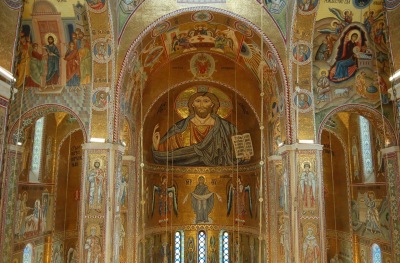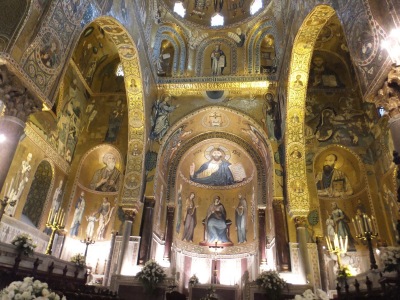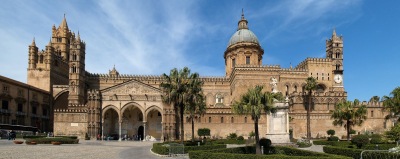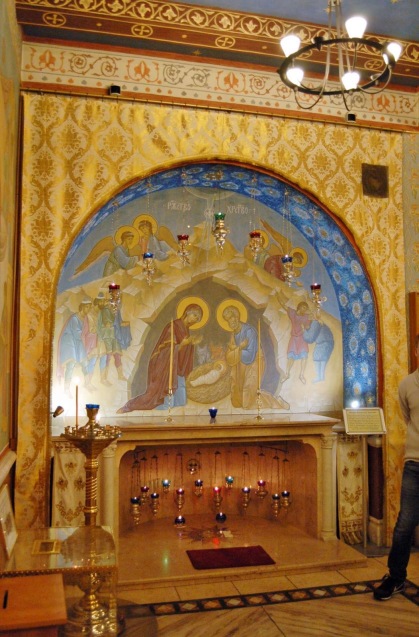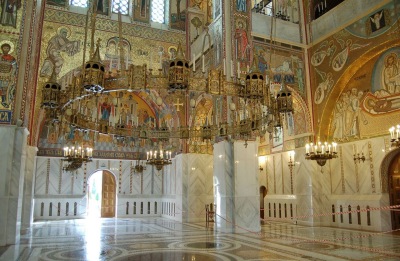Here is an inspiration for artists in the West!
The latest edition of the Orthodox Arts Journal has a feature on the recently dedicated Cathedral of the Protection of the Mother of God at Yasenevo, which overlooks Moscow. It is was dedicated by Patriarch Kirill and appropriately (given his recent meeting with Pope Francis) the mosaics especially draw inspiration from traditional Western iconographic forms. As the article explains, they looked to the Romanesque churches of Sicily built in the Byzantine influenced Romanesque style in the 12th century under the patronage of the Norman king, Roger II. In doing this, the art conforms fully to the principles that define the iconographic tradition, but in an exciting way that is unusual in Russia.
Below, the interior mosaics and the (very Russian) exterior of the cathedral:
Compare and contrast those with the interior and exterior of the Cappella Palatina in Palermo, Sicily
I have only seen the photographs that are included in the article, but based upon these I would say that this is a model lesson in how to draw into your own tradition outside influences without compromising core principles. It is fresh and exciting and this is the mark of a truly living tradition.
Furthermore, there is plenty of more conventional, Eastern style iconography here too, and the external appearance of the Church clearly that of an Eastern church.
I suggest that Catholics in the West should look at the way in which the Eastern Church so successfully reestablished its iconographic tradition of art in the mid-20th century. (The leader figures were Russian ex-patriots, theorists and painters living in Paris, the leading figures were Vladimir Lossky, P. D. Ouspensky and Gregory Kroug – we will be talking more about them and style of Russian icons in coming weeks!).
The new iconography is so much more than an unthinking recreation of the past – which would be pastiche. The best of the icon painters of of today who work in this tradition are producing work that bears the mark of its time and place; and can stand alongside the great artists of the past.
This is what I hope to see applied to our distinctly Western traditions of liturgical art in the future. If any of you are interested in knowing more about icons and also my ideas on how we might re-establish a culture of beauty in the West you can read the book The Way of Beauty. This book is the basis of a whole program of study available at www.Pontifex.University – a generic formation in beauty that will give you a deep understanding of the basis of culture, it will cultivate (if you will forgive the pun!) creativity and an openness to inspiration.
You can read the whole article in Orthodox Arts Journal, here.

